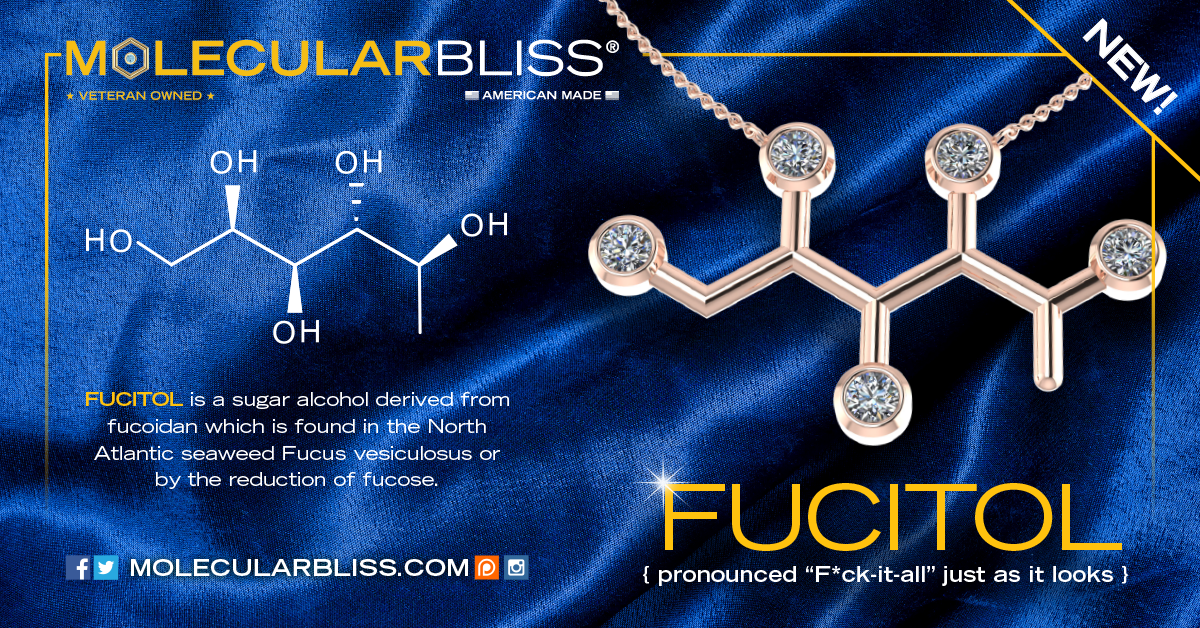tanzanite is THE BIRTHSTONE FOR december! SHARE SOME gems with yourself and your loved ones!
This month's spotlight
OUR THREE NEWEST MOLECULES!
Molecular Bliss creates jewelry that is more than the next pretty piece, it's beauty with a meaning!
By casting the neurotransmitter molecular structures in precious metals, and adorning them with birthstones to represent the molecular bonds, we have captured the essence of each structure, and exposed the beauty of what they represent. Each molecular structure is made to be a constant visual reminder of the amazing small things in life that we harbor within each of us that have large and important meanings in our lives.
Neurotransmitters are what make us who we are?
Some believe the answer to be our thoughts and emotions, while others believe it to be our brain and nerves. In nature we find bridges that connect the physical/biological with the metaphysical – chemical compounds know as neurotransmitters. These endogenous chemicals send signals from neurons (a highly specialized cell of the nervous system) to a target cell across a synapse (the junction between neurons).
Explore our second round of meaningful molecules below.
We chose these next molecules for their vast markets which means we are able to connect with the people that love the products that they represent.
Next you can explore our third round of meaningful molecules below, some of which are now available!
We chose this third round of molecules for their funny names and cool things they represent, which means we are able to connect with the people that love the products that they represent.
By casting the neurotransmitter molecular structures in precious metals, and adorning them with birthstones to represent the molecular bonds, we have captured the essence of each structure, and exposed the beauty of what they represent. Each molecular structure is made to be a constant visual reminder of the amazing small things in life that we harbor within each of us that have large and important meanings in our lives.
Neurotransmitters are what make us who we are?
Some believe the answer to be our thoughts and emotions, while others believe it to be our brain and nerves. In nature we find bridges that connect the physical/biological with the metaphysical – chemical compounds know as neurotransmitters. These endogenous chemicals send signals from neurons (a highly specialized cell of the nervous system) to a target cell across a synapse (the junction between neurons).
- Serotonin (SE, 5-HT) - Considered to be responsible for maintaining happiness and mood balance,
this neurotransmitter also helps regulate appetite, sleep and some cognitive functions like memory
and learning.
- Dopamine (DA) - Commonly associated with providing feelings of desire, pleasure, enjoyment or feel good, this neurotransmitter is released when a pleasurable activity is occurring, or expected to occur.
- Norepinephrine (noradrenaline; NE, NA) - Similar to adrenaline, this neurotransmitter increases focus and motivation in times of physical and mental stress by increasing the heart rate and blood flow to skeletal muscle, and releasing glucose from energy stores.
- GABA (Y-aminobutyric acid) - Known for making a person feel more tranquil, and giving a sense of wellbeing, this neurotransmitter calms excited nerve impulses.
Explore our second round of meaningful molecules below.
We chose these next molecules for their vast markets which means we are able to connect with the people that love the products that they represent.
- Wine (resveratrol) - Resveratrol is the chemical found in red wine that provides the amazing health benefits that wine lovers have come to love, and is the reason it is known as the wine molecule.
- Hops (humulone) - Humulone is a vinylogous type of organic acid that is a bitter-tasting chemical compound found in the resin of mature hops, which is one of the main ingredients in the process of brewing beer, thus the reason that this is known as the beer molecule.
- Caffeine - Caffeine is most commonly associated with coffee, tea, or chocolate. Caffeine is a chemical linked to relieving depression, making us more relaxed, alert, and energetic, as well as relieving migraine headaches. Many people choose to start their day with this commonly found chemical.
- DMT (dimethyltryptamine) - DMT is a neurotransmitter, or chemical in our brains, similar in structure to serotonin. This is created in trace amounts by the pineal gland during normal metabolism, and may be released in massive amounts during birth and death, thus becoming known as the "spirit" molecule.
- THC (tetrahydrocannabinol) - THC is the active ingredient in tetrahydrocannabinol. This chemical is associated with medical benefits such as pain relief, PTSD treatment, nausea, or glaucoma, causing dopamine release which produces a feeling of euphoria.
Next you can explore our third round of meaningful molecules below, some of which are now available!
We chose this third round of molecules for their funny names and cool things they represent, which means we are able to connect with the people that love the products that they represent.
- F*ck-it-all (Fucitol) - Yes, this hilarious molecule is pronounced exactly the way you think! We chose this purely based on it's name, but here's what this is, just in case you're curious beyond this hilarity of what it's called...
- Although this sounds like what an undergraduate chemist might exclaim when their synthesis goes wrong, it's actually an alcohol, whose other names are L-fuc-ol or 1-deoxy-D-galactitol. It gets its wonderful trivial name from the fact that it is derived from the sugar fucose, which comes from a seaweed found in the North Atlantic called Bladderwrack whose latin name is Fucus vesiculosis.
- Erotic Acid (Orotic Acid) - This molecule was also chosen for the misspelling of it's name. We can all use more erotic acid in our lives, but the meaning can be found below.
- No, this isn't the world's best aphrodisiac. Its correct name is orotic acid, but it has been misspelt so often in the chemical literature that it is also known as erotic acid! Another name for it is vitamin B13.
- TNT (Trinitrotoluene or Dynamite) - This molecule is one of the most commonly associated substances for being explosive and thus is why we chose this dynamite structure!
- The acronym TNT is short for 2,4,6 trinitrotoluene, which is an aromatic organic molecule with three nitro groups attached. TNT was first made in 1863 by Joseph Wilbrand, a German chemist, who was working on the production of dyes. Yellow TNT’s early use was not as an explosive, and this ‘hidden’ property was not discovered for another 20 years. The dangers of TNT are well documented and the superiority to other early explosives has been well demonstrated.












